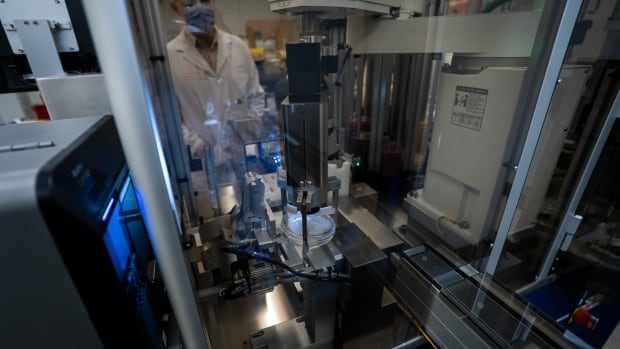Far from the jungle, Tarzan and Jane quietly spring into action within a sterile laboratory at St. Paul’s Hospital in downtown Vancouver. These robotic entities utilize artificial intelligence to manage and process a substantial portion, up to 70 percent, of the hospital’s microbiology samples.
In the innovative $1-million automated WASPLab, an acronym for “walk-away specimen processor,” the duo unscrews specimen tubes and transfers the samples onto bacterial culture plates. Despite the lack of glamour in their tasks, the significance of their role is immense. St. Paul’s lab annually processes over 145,000 microbiological samples from British Columbia and Yukon.
Dr. Marc Romney oversees the operation of a new AI-assisted machine at St. Paul’s Hospital in Vancouver on January 23, 2024. This advanced $1-million automated AI-based lab system integrates artificial intelligence and robots to handle repetitive tasks, thereby allowing human professionals to focus on more intricate responsibilities.
While lab automation is not a novel concept, the utilization of AI in WASPLab marks a pioneering advancement in Western Canada. This system effectively assesses and organizes culture plates, segregates bacterial cultures, and alerts staff members when further analysis is required.
Dr. Marc Romney, the head of medical microbiology and virology at St. Paul’s, emphasizes how the heightened level of automation significantly eases the workload of doctors and lab technologists by eliminating repetitive manual tasks.
The robotic duo, Tarzan and Jane, have been integral members of the lab for two months. Dr. Romney commends their efficiency, describing them as diligent workers capable of managing large batches of samples efficiently, even during early mornings and late shifts.
“We value their contribution in enabling lab personnel to focus on more intricate tasks. The routine manual work is now efficiently handled by these robots,” expressed Dr. Romney.
Upon the arrival of Tarzan and Jane, there was a mix of excitement and slight apprehension among the lab staff. However, as they witnessed the robots streamline their tasks, the initial concerns dissipated.
Tarzan specializes in the preparatory phase, efficiently handling the preliminary steps in readying specimens for bacterial culture. On the other hand, Jane excels in the delicate process of applying precise volumes of specimens onto bacterial culture plates.
Following incubation, the AI-driven WASPLab system automatically evaluates the culture plates, discarding negative results and flagging positive ones. This automation significantly expedites the process compared to manual interventions.
Despite the efficiency of the system, occasional errors occur, with Tarzan being known to drop tubes. Dr. Romney acknowledges the necessity of human supervision to rectify such errors promptly.
The collaboration between doctors, laboratory staff, and the Italy-based lab automation manufacturer Copan was instrumental in customizing the WASPLab to meet St. Paul’s Hospital’s specific requirements. The project was made possible through funding from a generous donor to the St. Paul’s Foundation.
Dr. Romney envisions the integration of another WASPLab when the new St. Paul’s Hospital opens in 2027. While robots and AI are poised to play pivotal roles in healthcare settings, Dr. Romney asserts that they will complement rather than entirely replace human medical professionals.
As the healthcare landscape evolves, AI is expected to alleviate physicians from mundane tasks, allowing them to focus on more complex patient care. However, the intricate nature of healthcare demands human intervention for nuanced decision-making.
In conclusion, while AI holds promise for the future of healthcare, Dr. Romney emphasizes the indispensable role of human professionals in providing comprehensive and empathetic patient care.










